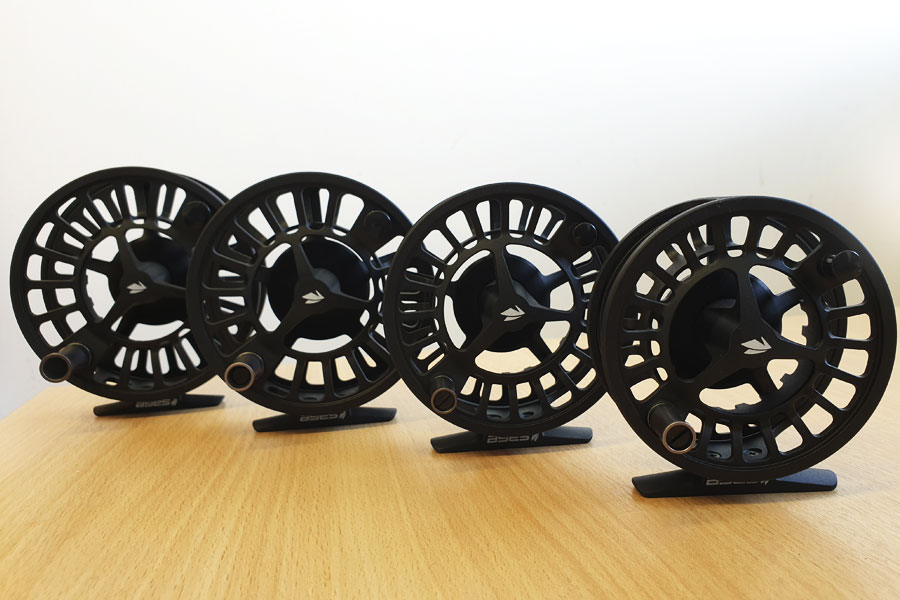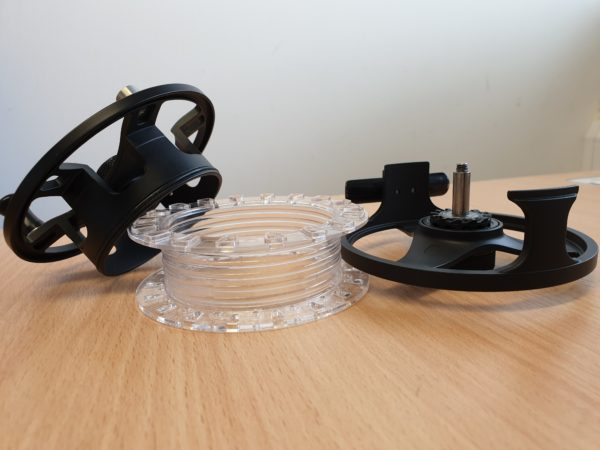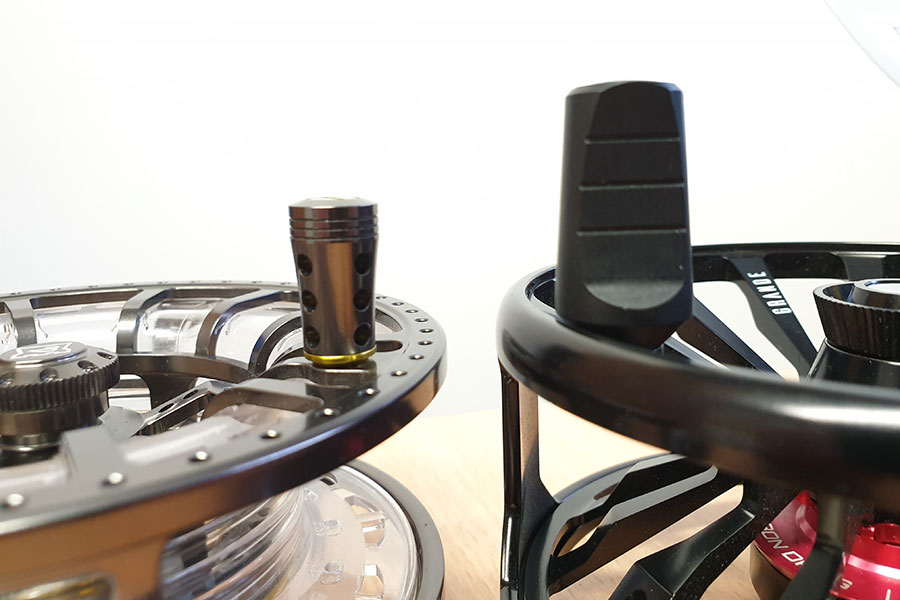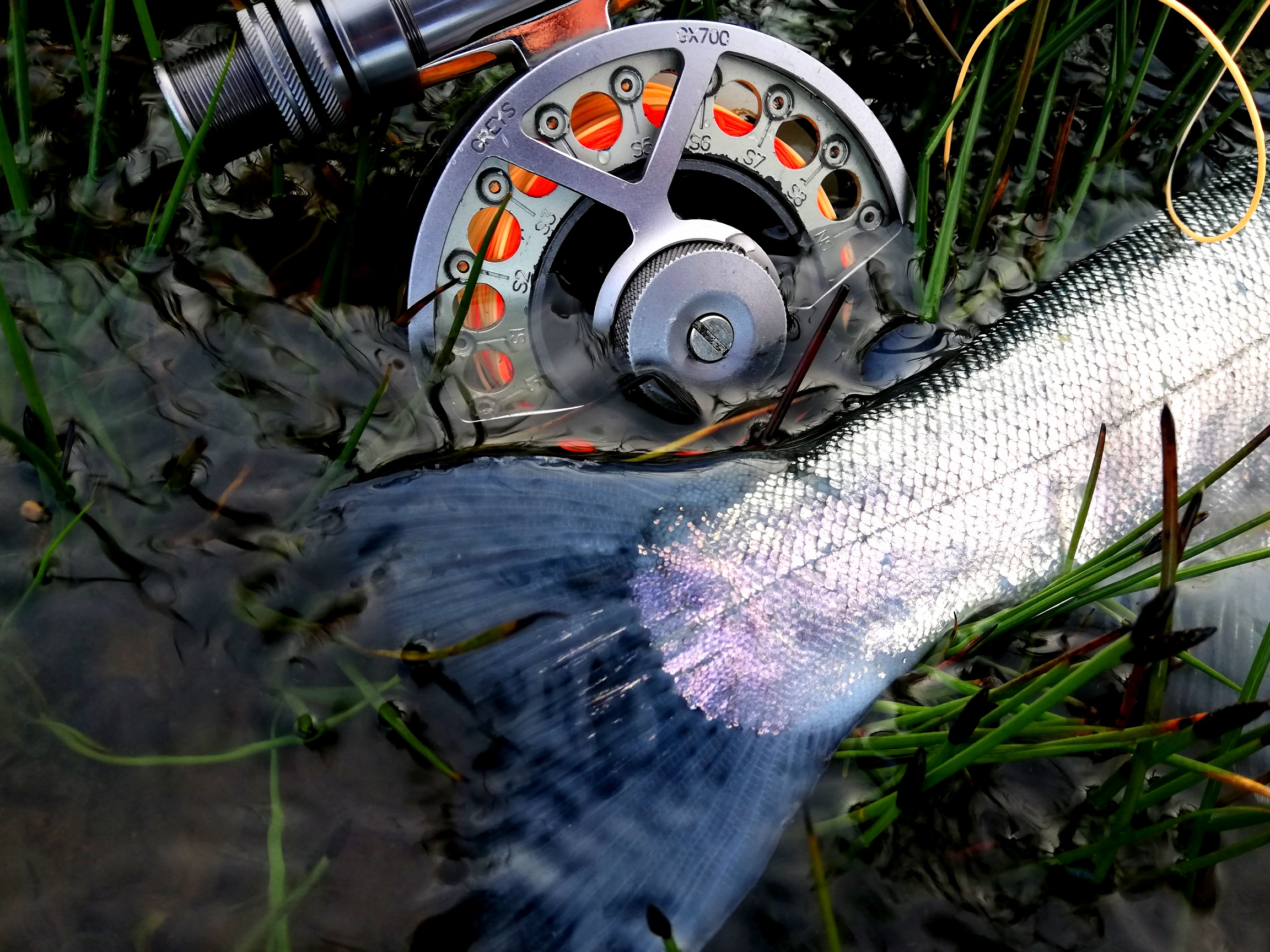
How do I choose a fly reel?
Probably one of the coolest parts of a fly fishing outfit, fly reels are easy to get excited about for many reasons. They are technical (lots of discussion points), they come in lots of different designs and colours and the ever so sweet sound they make when the line is being peeled out by a specimen sized fish gets the hairs on the back of your neck standing on edge.
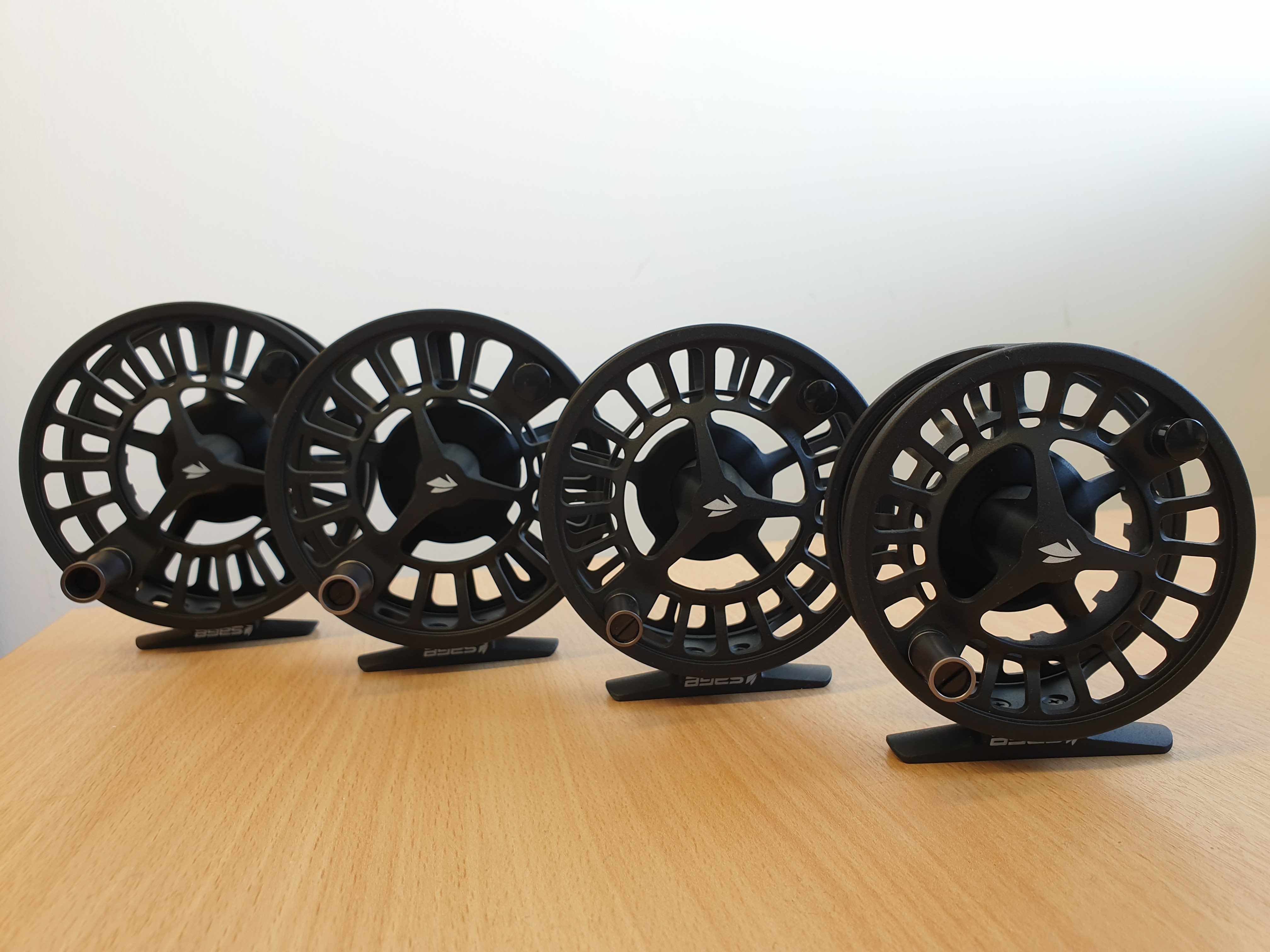
Fly reels can be quite expensive, at least some of them are. You may question why something that seems so simple can be that expensive, but the truth is that reels are specialised pieces of gear that are specifically designed to perform consistently and reliably. Knowing what you plan to catch will dictate which rod, line and reel that is best for your needs. Be it pike, salmon, or trout:
What are fly reels made of?
There are different materials and manufacturing processes for reels which produce different quality. This is often reflected in the price that they command. There are three main types of materials that fly reels tend to be made from and these are plastic, graphite and aluminium.
Due to the nature of manufacturing, some processes are more scalable to production than other methods.
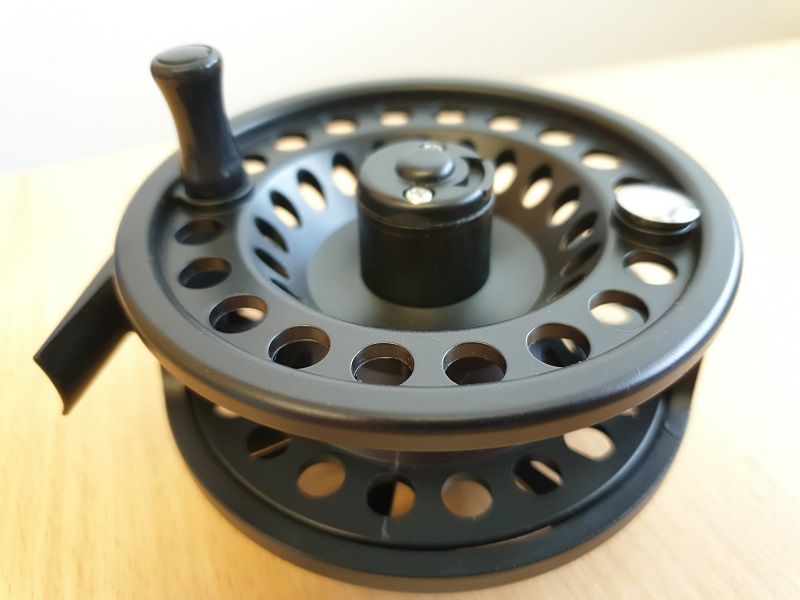
Graphite provides a robust and affordable made fly reel.
Graphite and plastic reels are easy for manufacturers to produce in mass, meaning they are able to sell them at an astonishingly good value point. Quite often these materials are made as composites to create a more durable and stronger material. These materials are both lightweight, as well as resistant to corrosion – ideal for saltwater fishing. To reach their value price point they tend to be manufactured on a large scale.
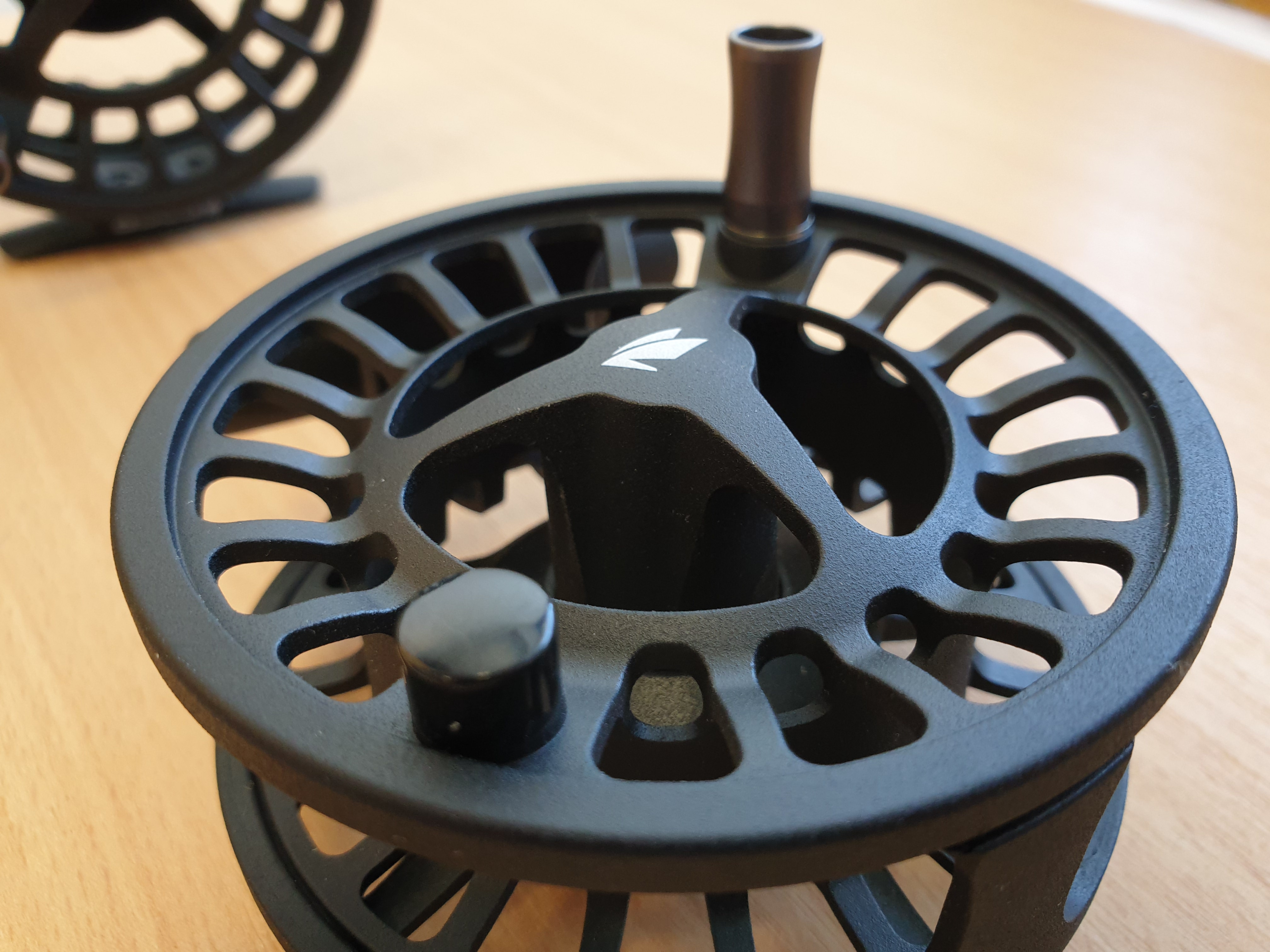
Die-cast fly reels provide strength and durability.
Die-cast aluminium revolutionised the reel market a long time ago and has stayed relevant even with newer methods being implemented to push the boundaries of reel design. Die-cast aluminium is when molten aluminium is poured into a mould to create the case of a reel. Whilst not as strong as engineered aluminium, advances in design and materials make this a great option at its price point.
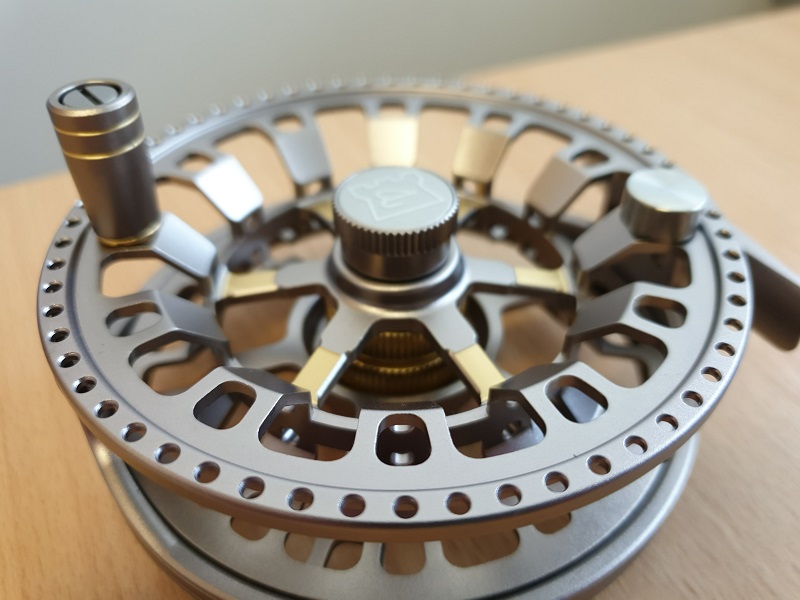
Lightweight, durable and a stronger integrity property which determines the higher price point for machined aluminium reels.
Engineered aluminium is created by a single block of aluminium being machined out by computerised machines to create a reel frame. The benefits are that it’s lightweight, durable and has a stronger integrity property which determines the higher price point that is usually established with reels manufactured from this process. With an anodised finish and good care, this type of reel should last a lifetime.
What is the arbor on a fly reel?
There are many different reels on the market, but they all tend to fall within three main categories of design. The fly reel arbor is the circumference size of the reel spool and in most recent years, large arbor reels have dominated the fly fishing market. Below we look at the various arbor sizes available and what benefits they provide.
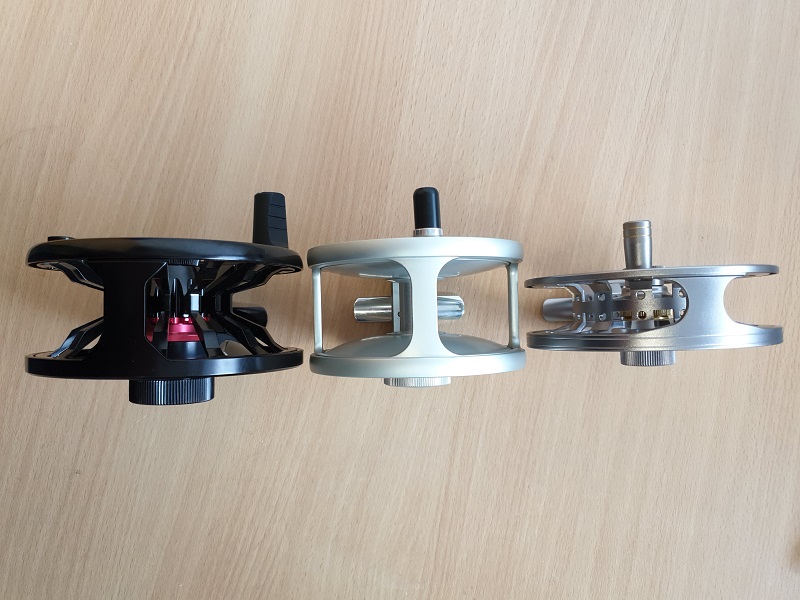
Various arbors
Standard arbors are a traditional design which is still a favourite amongst some anglers. Whilst they hold plenty of backing, they are narrow in width leading to reduced retrieval rate and can also produce coil memory.
Medium arbor sits in the middle between large and standard arbors. With the base of the reel larger in diameter, the reel has been widened to compensate. This allows the reel to have the capacity to hold a good amount of backing and a thicker fly line, which helps to reduce instances of coil memory, whilst providing better line retrieval rate over a standard arbor.
A large/wide arbor is the largest of arbors and has become very popular with a lot of anglers. With a wide diameter base spindle and wide width, they offer optimal storage for backing line and thick diameter fly lines whilst providing increased line retrieval rate and heavily reducing coil memory. They can look oversized on some fly rod setups compared to standard arbors, which might put some anglers off that aesthetic look. However, they are often made from lightweight materials providing excellent balance when combined with the right rod.
Large arbor reels usually have ports on the spools to help aid in the drying of the backing line and it helps reduce the weight of the larger profile reel too.
Fly Reel Spool Types
Some reels have the ability to switch over spools, which allows the user to quickly change their line to adapt to various situations whilst fishing. There are two ways in which this can be done:
Cartridge/cassette spools are a new way of quickly changing spools. Being made from plastic they are considerably cheaper than the more traditional removable spools – this means the angler can have more spare cartridge spools loaded with different lines, giving them a line for every condition.

Removable spools/Full caged fly reel are where the side section of the reel (with the spool) are released from the reel. This allows for another spool with a different line to replace it quickly. These tend to be metal and maintain the quality feel of the reel.
A fully caged fly reel is when the spool is integrated into the cage, this makes for a stronger and more durable reel. This is because there are fewer components to them compared to a cassette fly reel. This also allows drag systems to be more refined and even makes them easier to seal for saltwater applications.
Do all fly reels have drag?
It used to be that click and pawl drag systems were the go-to drag mechanism for fly fishers, now the evolutionary disc drag system has appeared and it has become the favorite of the two. The drag system is probably one of the most important parts of a fly reel, as it adjusts the tension on the line thus helping to keep the line tight and creating enough drag or resistance to play your quarry.
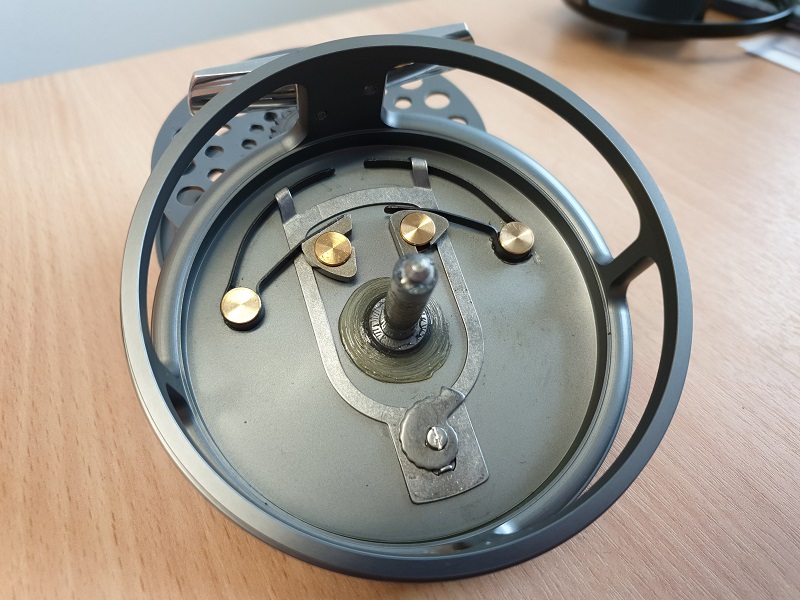
Click and Pawl have a spring loaded pawl on the inside of the reels frame which connects to a small geared like wheel on the spool. The pawl ratchets against the teeth on the spool, which causes tension on the spring in turn causing resistance against the spool as it releases the line. The best thing about these reels is that iconic sound they produce when the line is being taken, the pure simplicity of this system means that it is also extremely reliable in all conditions.
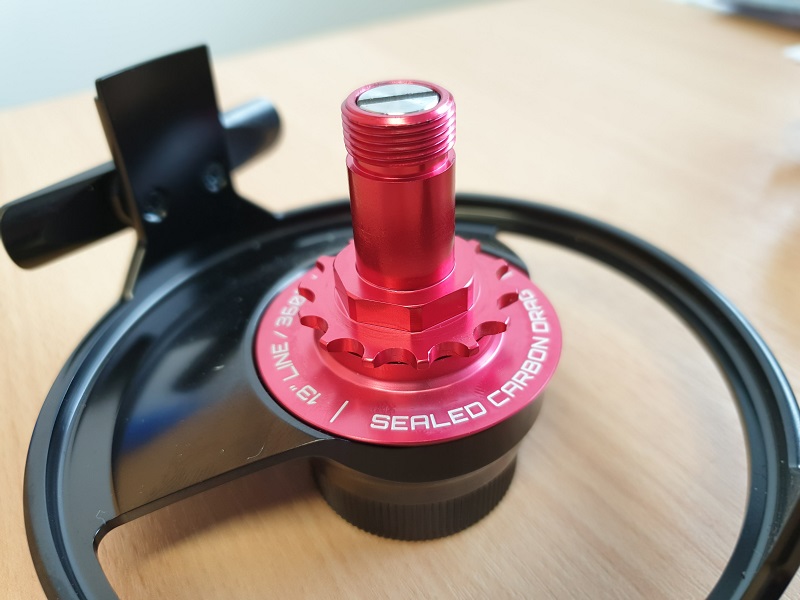
Disc Drag are currently the most prominent of styles of drag systems found on modern reels. They offer considerably better transition and consistency of tension than that of click and pawl systems. The disc drag system uses friction between high friction material (Teflon, Delrin, rubber, cork and carbon fibre) and a metal disk at the centre of the mechanism. The mechanisms tend to be either sealed or capped, which helps to prevent any dirt or foreign objects rendering them redundant. The tension adjuster on the side of the reel allows the user to adjust the tension as required, when looking at reels it is good to find one with the smoothest tension.
Types of Retrieval Mechanisms
There are two different types of retrieval systems for fly reels – the single action (most common) and the automatic.
Single action is by the far most common and popular type of retrieval mechanisms. Each time you turn the reel one full revolution it will complete one complete turn of the spool. Their simplicity makes them more durable and increases their overall reliability.
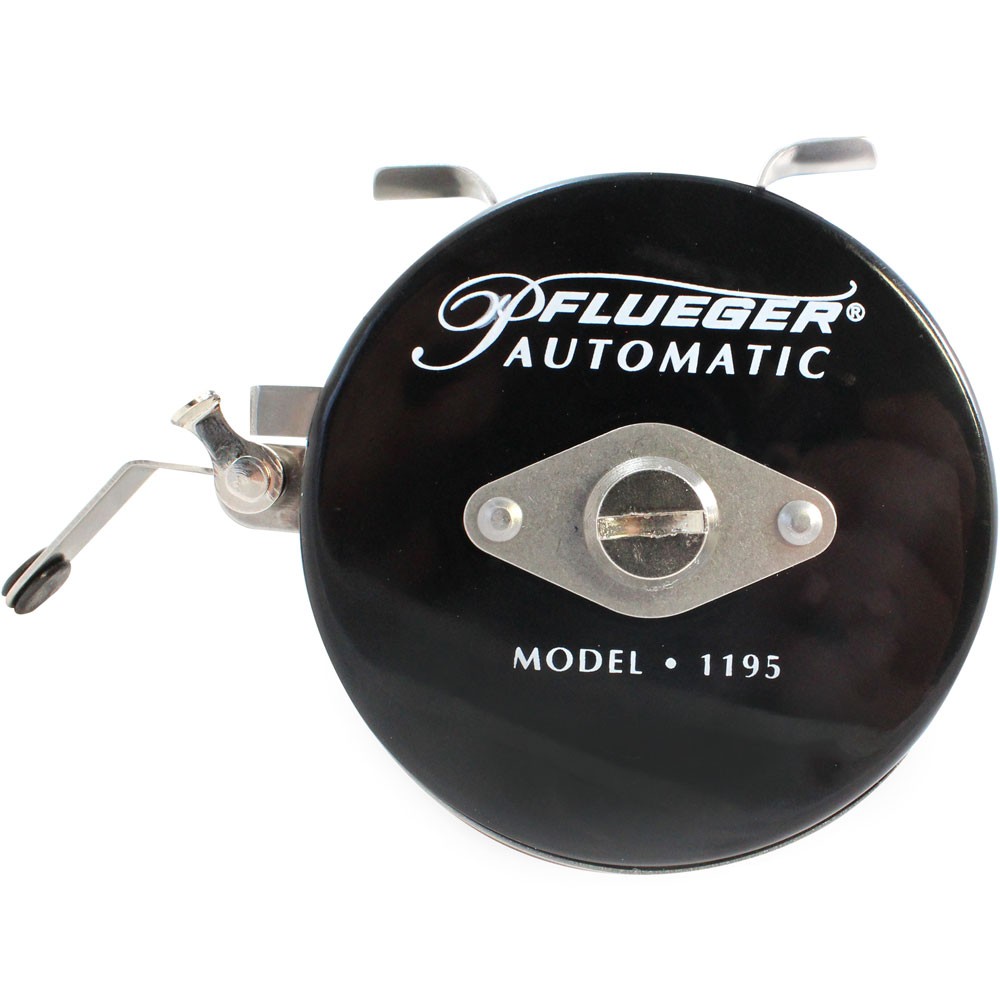
Automatic fly reel example
Automatic fly reels are spring loaded reels which have a latch to trigger them to retrieve the line back in. Whilst not for some people, this is a great option for anyone who has to fish completely one handed.
Need help? Talk to one of our fly reel specialists.
Fly Reel Features
- • Die cast fly reels are created by casting individual parts from a mould and assembling.
- • Cassette spool is an interchangeable plastic spool making it quick and easy to change line.
- • Game reel is a larger reel made specifically for catching larger game fish.
- • Anodised is a coating finish which makes aluminium to resist corrosion.
- • Adjustable drag allows you to adjust the line tension by turning the knob.
- • Direct drive is when the handle is directly connected to the spool giving 1:1 retrieval.
- • Disc drag is a friction-based system used to give drag on the line.
- • Double click system uses a two pawl system providing more drag than a single.
- • Exposed rim provides a surface where you can use the palm to create drag.
- • CNC machined is when the reel is made out of a single block of material.
- • Removable spool allows the spool to be taken off the frame.
- • Reversible allows the reel to be used on either side. Accommodating left and right handed anglers.
- • Single click a system where the click and pawl only uses a single pawl for drag.
- • Spool capacity the amount of line a spool can hold.
- • Spool diameter is in relation to the size of the arbor.
- • Wide arbor gives more surface area that results in faster line in speed.
Fly reel maintenance
After investing in a new reel it is a good idea to take good care of it to make sure that it will last as long as possible. We recommend following the manufacturer’s care instructions but here are a few care tips:
- • Keep the reel and any spools inside a cushioned protective case; this will prevent any accidental damage.
- • Try to keep any sand or grit away from the reel as it can be damaging to disc drag systems, if you experience any dirt or sand it’s best to clean immediately.
- • After using, remove the spool and wipe down to make sure there isn’t any dirt.
- • If fishing in saltwater, be sure to use corrosion-resistant reels. We highly recommend rinsing saltwater reels with freshwater to eliminate any build up of salt.
- • Make sure to wash the reel down and air dry after use.
- • Apply a small amount of oil to the exterior prior and after the season.
- • Return the tension on the adjustable knob to their lowest setting – this is so it will not seize or damage the drag system (especially the click and pawl mechanism)
- • Try to avoid ever dropping your reel as some materials will shatter and it may cause irreparable damage.

